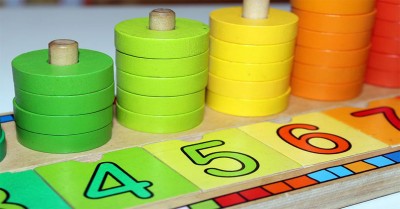Reflections are an ongoing occurrence that enables us, educators, to think honestly about our professional practice and ideas. It challenges us to take a step back to analyse our personal experiences to enhance learning and speculate upon the future and act.
The following questions are to be used as a guide for reflecting on each of the standards within Quality Area 3. Use the information from these questions to recognize good practice or to change and improve what is not working well. It can also be used as part of Self-Assessment or Quality Improvement Plan.
Questions to guide reflection on practice for Standard 3.1
• How does the environment support children’s learning? What barriers do we need to overcome?
• What processes are in place to monitor the cleanliness and safety of the premises, furniture and equipment?
• How does the design of the environment promote and foster children’s learning, development and well-being?
• How do we ensure that children are safe entering and leaving the service?
• How does the environment support the access of all children and families enrolled at the service and children who may enrol in the future?
• How do we ensure the environment is organised to meet supervision requirements, and also provide appropriate spaces and activities for children’s need for privacy and autonomy?
• How are FDC educators supported and encouraged to maintain the upkeep of their residence’s environment to ensure children’s safety and wellbeing?
Questions to guide reflection on practice for Standard 3.2
• Is the environment welcoming, home-like and inviting for children and families (within the constraints of our setting)?
• What opportunities do we provide for children to be involved in planning, setting up and modifying the environment?
• How is the environment equipped and organised to cater for all ages and levels of capabilities?
• How are the backgrounds and cultures of families and the broader community reflected in the environment?
• How can the physical environment be adapted to include all children and provide for their needs and interests?
• How can we create a physical environment that welcomes and respects all children and families, and encourages their participation in learning experiences?
• How can we organise environments and spaces to provide children with opportunities to play independently as well as promote small and large group interactions, engage in unstructured play?
• How do we plan to use the physical space to support children in building relationships?
• How do we support children’s interaction between the indoor and outdoor environments?
• How does the organisation of the indoor and outdoor environment allow for a variety of uses by children and educators?
• How do we arrange indoor and outdoor spaces that support children’s access to materials and equipment?
• What adaptions can be made to the environment or additional resources introduced to provoke interest, creativity, sustained shared thinking and collaborative learning?
• How do we provide spaces that promote safe exploration, learning through play and interaction with the environment for children of all ages?
• What equipment do we provide that allows for multiple uses?
• How does the physical environment contribute positively to children’s developing autonomy and independence?
• What features in the physical environment encourage open-ended interactions, spontaneity, risk-taking, exploration, discovery and connection with nature?
• How do we regularly evaluate the effectiveness of learning environments and draw links to the intended learning outcomes?
• What messages are given to children about how the service cares for the environment?
• What strategies can we implement to support educators to model environmentally responsible practices, and foster children’s capacity to value and respect the broader environment?
• How can we access additional information, ideas and strategies to support children to take an active role in caring for the environment and contribute to a sustainable future?
• How do we foster children’s capacity to understand, care for and respect the natural environment and the interdependence between people, plants, animals and the land?
• What strategies are in place to provide appropriate levels of challenge to children while ensuring that younger children are safe?
• How do we ensure the environment provides a diverse range of meaningful learning experiences while maintaining a warm, homely environment for children?
For more information on how to write Reflections: Reflective Practices In Childcare
References:
New Guide To The National Quality Framework, ACECQA, Oct 2017







 Here is the list of the EYLF Learning Outcomes that you can use as a guide or reference for your documentation and planning. The EYLF
Here is the list of the EYLF Learning Outcomes that you can use as a guide or reference for your documentation and planning. The EYLF The EYLF is a guide which consists of Principles, Practices and 5 main Learning Outcomes along with each of their sub outcomes, based on identity,
The EYLF is a guide which consists of Principles, Practices and 5 main Learning Outcomes along with each of their sub outcomes, based on identity, This is a guide on How to Write a Learning Story. It provides information on What Is A Learning Story, Writing A Learning Story, Sample
This is a guide on How to Write a Learning Story. It provides information on What Is A Learning Story, Writing A Learning Story, Sample One of the most important types of documentation methods that educators needs to be familiar with are “observations”. Observations are crucial for all early childhood
One of the most important types of documentation methods that educators needs to be familiar with are “observations”. Observations are crucial for all early childhood To support children achieve learning outcomes from the EYLF Framework, the following list gives educators examples of how to promote children's learning in each individual
To support children achieve learning outcomes from the EYLF Framework, the following list gives educators examples of how to promote children's learning in each individual Reflective practice is learning from everyday situations and issues and concerns that arise which form part of our daily routine while working in an early
Reflective practice is learning from everyday situations and issues and concerns that arise which form part of our daily routine while working in an early Within Australia, Programming and Planning is reflected and supported by the Early Years Learning Framework. Educators within early childhood settings, use the EYLF to guide
Within Australia, Programming and Planning is reflected and supported by the Early Years Learning Framework. Educators within early childhood settings, use the EYLF to guide When observing children, it's important that we use a range of different observation methods from running records, learning stories to photographs and work samples. Using
When observing children, it's important that we use a range of different observation methods from running records, learning stories to photographs and work samples. Using This is a guide for educators on what to observe under each sub learning outcome from the EYLF Framework, when a child is engaged in
This is a guide for educators on what to observe under each sub learning outcome from the EYLF Framework, when a child is engaged in The Early Years Learning Framework describes the curriculum as “all the interactions, experiences, activities, routines and events, planned and unplanned, that occur in an environment
The Early Years Learning Framework describes the curriculum as “all the interactions, experiences, activities, routines and events, planned and unplanned, that occur in an environment


